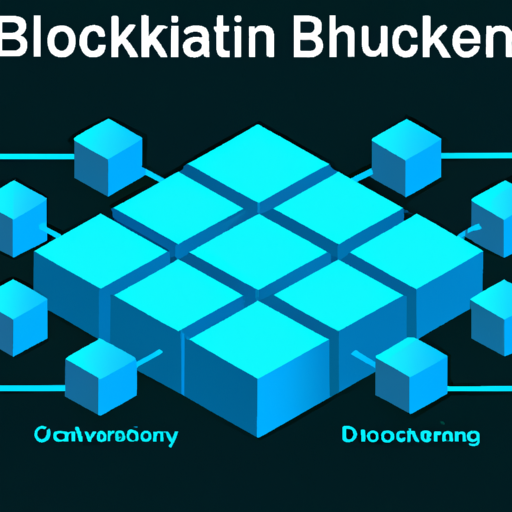-
Table of Contents
“Unlock the power of cryptocurrency mining – create new coins and reap the rewards!”
Introduction
Cryptocurrency mining is the process of creating new coins by verifying and recording transactions on a distributed ledger known as a blockchain. It is a process that requires specialized hardware and software to solve complex mathematical problems in order to add new blocks to the blockchain. The miners are rewarded with newly created coins for their efforts. Mining is an essential part of the cryptocurrency ecosystem, as it helps to secure the network and process transactions. It also helps to create new coins, which can be used to purchase goods and services.
Understanding the Process of Creating New Coins
Creating new coins is a complex process that requires a great deal of research and planning. It involves a number of steps, from concept development to the actual minting of the coins.
The first step in creating a new coin is concept development. This involves researching the history and culture of the country or region for which the coin is being created. It also involves researching the current economic and political climate of the region. This research helps to inform the design of the coin, as well as the message it conveys.
Once the concept has been developed, the next step is to create a design for the coin. This involves working with a professional coin designer to create a design that is aesthetically pleasing and conveys the desired message. The design must also meet the requirements of the minting authority, such as size, weight, and composition.
Once the design has been approved, the next step is to create a die for the coin. This is a metal stamp that is used to imprint the design onto the coin. The die is then used to strike the coins, which are then inspected for quality.
The final step in the process is to mint the coins. This involves using a specialized machine to press the coins into their final shape. The coins are then packaged and shipped to the customer.
Creating new coins is a complex process that requires a great deal of research and planning. It involves a number of steps, from concept development to the actual minting of the coins. By understanding the process, it is possible to create coins that are both aesthetically pleasing and meaningful.
The Impact of Cryptocurrency Mining on the Environment
Cryptocurrency mining is a process that requires a significant amount of energy and computing power. As the demand for cryptocurrency increases, so does the need for more energy to power the mining process. Unfortunately, this has had a negative impact on the environment.
The most common form of cryptocurrency mining is known as “proof-of-work” mining. This process requires miners to solve complex mathematical problems in order to verify transactions and add them to the blockchain. This process is extremely energy-intensive and requires a large amount of electricity to power the computers and cooling systems needed to keep them running.
The electricity used to power cryptocurrency mining is often generated from non-renewable sources such as coal and natural gas. This means that the process is contributing to the release of greenhouse gases into the atmosphere, which is contributing to global warming. In addition, the mining process also requires a large amount of water for cooling, which can lead to water shortages in areas where it is already scarce.
The environmental impact of cryptocurrency mining is not limited to the energy and water used in the process. The mining process also produces a large amount of waste in the form of discarded computer parts and other materials. This waste can be difficult to dispose of properly, leading to pollution and other environmental issues.
The environmental impact of cryptocurrency mining is a serious issue that needs to be addressed. Governments and organizations around the world are beginning to take steps to reduce the environmental impact of cryptocurrency mining. This includes encouraging the use of renewable energy sources to power the mining process, as well as encouraging the use of more efficient mining hardware.
In conclusion, cryptocurrency mining has had a significant impact on the environment. The process requires a large amount of energy and water, and produces a large amount of waste. Governments and organizations around the world are beginning to take steps to reduce the environmental impact of cryptocurrency mining, but more needs to be done to ensure that the process is sustainable in the long term.
How to Get Started with Cryptocurrency Mining
Cryptocurrency mining is an increasingly popular way to make money and gain access to digital currencies such as Bitcoin, Ethereum, and Litecoin. If you’re interested in getting started with cryptocurrency mining, here are some tips to help you get started.
1. Choose a Cryptocurrency to Mine: Before you can begin mining, you’ll need to decide which cryptocurrency you want to mine. Consider the type of hardware you have available, the amount of electricity you’re willing to use, and the amount of money you’re willing to invest.
2. Purchase Mining Hardware: Once you’ve chosen a cryptocurrency to mine, you’ll need to purchase the necessary hardware. This could include a graphics card, a processor, and a power supply. You may also need to purchase a cooling system to keep your hardware from overheating.
3. Set Up a Mining Pool: Mining pools are groups of miners who work together to increase their chances of earning rewards. Joining a mining pool can help you earn more rewards and reduce the amount of time it takes to mine a block.
4. Download Mining Software: Once you’ve purchased the necessary hardware and joined a mining pool, you’ll need to download mining software. This software will help you manage your mining activities and track your progress.
5. Start Mining: Once you’ve set up your hardware, joined a mining pool, and downloaded the necessary software, you’re ready to start mining. Make sure to monitor your progress and adjust your settings as needed to maximize your rewards.
Cryptocurrency mining can be a lucrative way to make money and gain access to digital currencies. With the right hardware, software, and mining pool, you can start mining and earning rewards in no time.
The Pros and Cons of Cryptocurrency Mining
Cryptocurrency mining is the process of verifying and adding transaction records to a public ledger, known as the blockchain. It is a process that is essential for the functioning of cryptocurrencies, as it ensures the security and integrity of the network. While cryptocurrency mining can be a lucrative endeavor, it also has its drawbacks.
Pros
1. Financial Rewards: Cryptocurrency mining can be a lucrative endeavor, as miners are rewarded with coins for their efforts. This can be a great way to generate passive income.
2. Low Barrier to Entry: Cryptocurrency mining does not require a large upfront investment. All that is needed is a computer with a graphics card and access to the internet.
3. Security: Cryptocurrency mining helps to secure the network, as miners are incentivized to verify transactions and prevent double-spending.
Cons
1. High Energy Consumption: Cryptocurrency mining requires a lot of energy, as miners must constantly run their computers to verify transactions. This can lead to high electricity bills.
2. Difficulty: As more miners join the network, the difficulty of mining increases. This can make it difficult for miners to generate a profit.
3. Volatility: Cryptocurrency prices are highly volatile, which can make it difficult to predict the future value of coins. This can lead to losses if the price of the coin drops.
In conclusion, cryptocurrency mining can be a lucrative endeavor, but it also has its drawbacks. Miners must weigh the pros and cons before deciding if it is the right choice for them.
Exploring the Different Types of Cryptocurrency Mining
Cryptocurrency mining is the process of verifying and adding transaction records to a public ledger, known as the blockchain. It is an essential part of the cryptocurrency ecosystem, as it helps to secure the network and process transactions. There are several different types of cryptocurrency mining, each with its own advantages and disadvantages.
The most common type of cryptocurrency mining is Proof-of-Work (PoW). This is the process of verifying transactions on the blockchain by solving complex mathematical problems. Miners are rewarded with cryptocurrency for their efforts. This type of mining is the most secure, but it is also the most energy-intensive and expensive.
Another type of cryptocurrency mining is Proof-of-Stake (PoS). This is a consensus mechanism that rewards miners based on the amount of cryptocurrency they hold. This type of mining is less energy-intensive and more cost-effective than PoW, but it is also less secure.
A third type of cryptocurrency mining is Delegated Proof-of-Stake (DPoS). This is a consensus mechanism that allows users to delegate their mining power to a third party. This type of mining is more energy-efficient and cost-effective than PoW and PoS, but it is also less secure.
Finally, there is Cloud Mining. This is a type of mining that allows users to rent mining hardware from a third-party provider. This type of mining is the most cost-effective, but it is also the least secure.
Each type of cryptocurrency mining has its own advantages and disadvantages. It is important to understand the different types of mining and their associated risks before investing in any cryptocurrency.
Conclusion
Cryptocurrency mining is an important process for creating new coins and maintaining the security of the blockchain network. It is a complex process that requires specialized hardware and software, as well as a great deal of energy. Despite the challenges, cryptocurrency mining is an important part of the cryptocurrency ecosystem and is likely to remain so for the foreseeable future.




